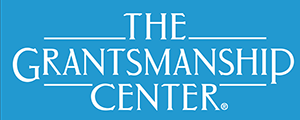Just as it is important to define terminology in a proposal so the reader understands what it means at your local level, it's also important to define what I will call concepts. Concepts are often general phrases used to describe conditions or behaviors that are the foundation of a proposal.
Blog
Define Your Terms, Episode Two: Write This—Not That!
Write This—Not That! Episode Two: Define Your terms What is a “food desert”? What does “environmentally unsustainable” mean; or “intolerable noise levels”? It is easy to assume that because we know what a term means in our agency, our neighborhood, our city or state, it has the same meaning to everyone, everywhere.
How Many is "Most"? Episode One: Write This—Not That!
Write This—Not That! Episode One: How many is “most”? This is the first in a series of blogs that will examine some of the small details that can strengthen a proposal and make it more compelling. And the devil is absolutely in the details:
Writing for Clarity
When you are writing a grant proposal, the goal of your writing should be easy comprehension on the first reading by someone not familiar with your subject. Here are some tips to help you accomplish that:
Every great proposal deserves a great summary!
Carefully crafting the summary section of a grant proposal is vital. Let’s look at why the summary is so important. While the summary must be written last, it is the first thing the reviewer will see. It allows the reader to begin reading with an overview of what the proposal is all about.
Punctuation has a Purpose
Finally! Your proposal is nearing its final draft. It’s now time to pay attention to a final detail - punctuation and page layout. Both of these give important cues to the reader, and those cues will help guide the reader smoothly through the proposal.
Communicating about Federal Grant Status
If you’ve been notified that your federal grant/s have been canceled or paused, or if the future for your awarded grants is uncertain, it is important to have a communications plan. Develop a media kit with press releases, handouts, and talking points for your designated representative/s. Include examples of how your grant-funded services have helped your community. Be sure to balance statistics with the human face, just as you do in grant proposals.
Crisis Planning
Planning for the possibility of a funding shortage is a daunting task for non-profits. Boards must take a hard look at programs and budgets, with input from key staff and perhaps even key donors and funders. The reality is that organizations will need to consider doing less with less, not more with less. Here are some things to consider in planning for budget impacts . . .
Losing a Grant
You’ve learned and confirmed that one of your grants is being discontinued, and you are unsure of the reasons. What next? First, find out why. Was the termination due to policy changes or funding cuts by the funder? Were there performance or compliance issues on the part of your organization as the recipient?
When a Federal Grant Suddenly Ends
Political changes can lead to changes in laws, policies, and rules. In the first few months of 2025, many federal grants and contracts have been terminated. Thousands of federal employees have been fired. The functions of complete agencies have been eliminated. There continues to be uncertainty about the future of many federal grant programs. While the legal status of these actions may still be unknown, nonprofits must decide how to move forward.












